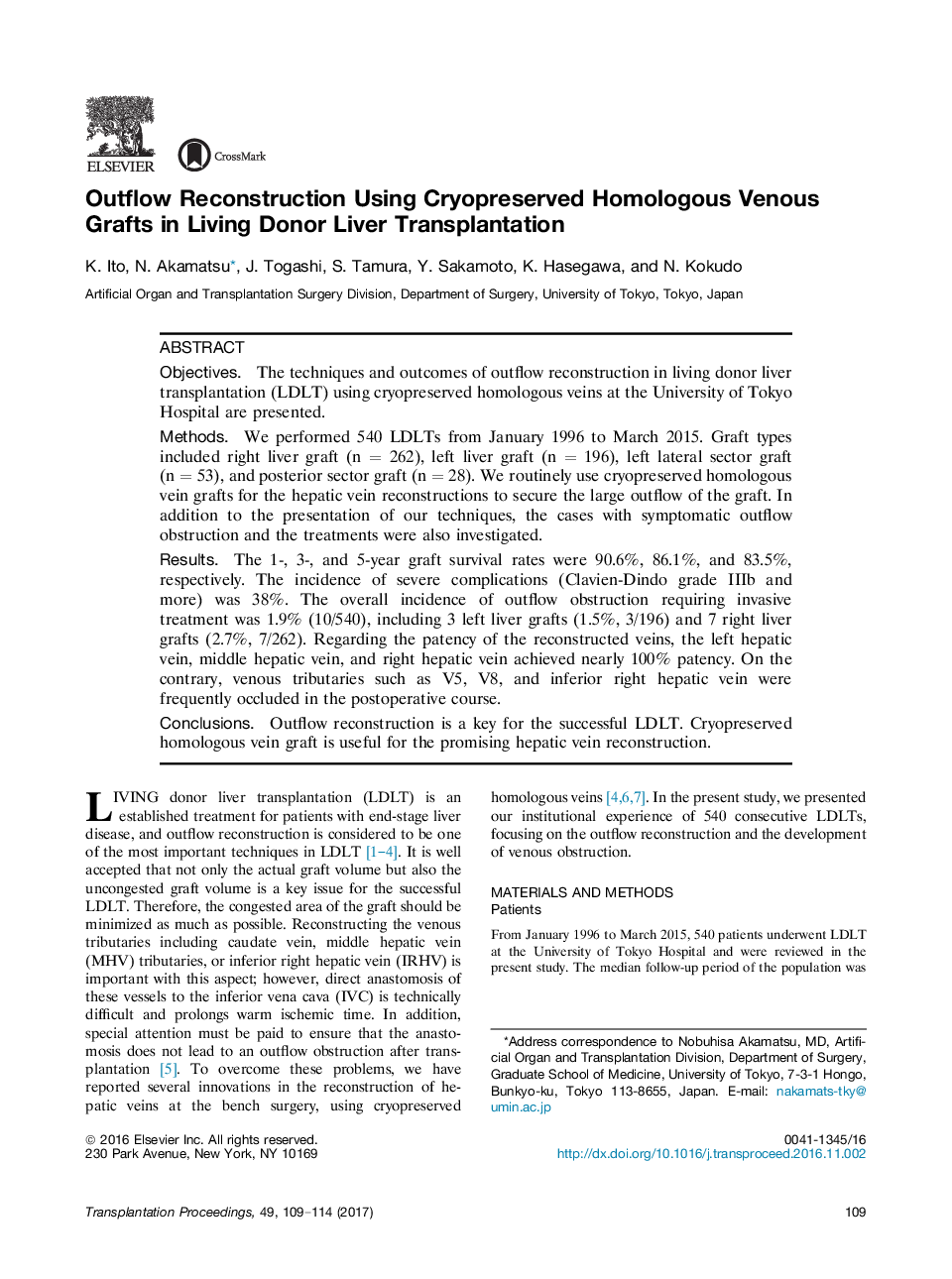| Article ID | Journal | Published Year | Pages | File Type |
|---|---|---|---|---|
| 5729299 | Transplantation Proceedings | 2017 | 6 Pages |
ObjectivesThe techniques and outcomes of outflow reconstruction in living donor liver transplantation (LDLT) using cryopreserved homologous veins at the University of Tokyo Hospital are presented.MethodsWe performed 540 LDLTs from January 1996 to March 2015. Graft types included right liver graft (n = 262), left liver graft (n = 196), left lateral sector graft (n = 53), and posterior sector graft (n = 28). We routinely use cryopreserved homologous vein grafts for the hepatic vein reconstructions to secure the large outflow of the graft. In addition to the presentation of our techniques, the cases with symptomatic outflow obstruction and the treatments were also investigated.ResultsThe 1-, 3-, and 5-year graft survival rates were 90.6%, 86.1%, and 83.5%, respectively. The incidence of severe complications (Clavien-Dindo grade IIIb and more) was 38%. The overall incidence of outflow obstruction requiring invasive treatment was 1.9% (10/540), including 3 left liver grafts (1.5%, 3/196) and 7 right liver grafts (2.7%, 7/262). Regarding the patency of the reconstructed veins, the left hepatic vein, middle hepatic vein, and right hepatic vein achieved nearly 100% patency. On the contrary, venous tributaries such as V5, V8, and inferior right hepatic vein were frequently occluded in the postoperative course.ConclusionsOutflow reconstruction is a key for the successful LDLT. Cryopreserved homologous vein graft is useful for the promising hepatic vein reconstruction.
